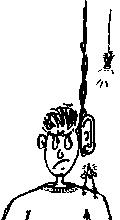For our next dip into The Tower Handbook we return to “Learning” , this time “Learning to Listen”. It is a short section, with answers to 6 questions. Here they are.
a. Does listening matter as long as I strike in the right place?
If you don’t listen to your bell, how do you know whether it is striking in the right place (and it probably isn’t)? Having your rope move a certain number of inches after another bell’s rope is no guarantee of a correct time interval between the bell in front striking and your bell striking. Remember that we can hear striking discrepancies as small as a few hundredths of a second.
b. Is hearing one’s bell harder on higher numbers?
Almost always yes, if other things are equal. The more bells there are, the more closely to one another they tend to strike. (Weight for weight a ring of twelve might go a little more slowly than a six, but there are twice as many bells to fit into the interval.) This means the hum of one blow has not died down so much when the following bell strikes. If the tenors are heavy (which is more likely than with fewer bells), then there will be more hum through which the strike notes must be heard. A tower with a lot of bells is probably bigger. This can give problems of balance between the sounds of bells in different positions.
c. How can I pick out my bell from all the others?
There are several techniques and many ringers use more than one at once. Each bell has a different note, but few ringers are sufficiently musical to pick out the sound of their own bell by absolute pitch. This leaves (at least) four other ways.
- Know what place you are in and count the beats (a useful learning technique, like counting your places in a method, but it will probably evolve into “feeling” where you are without actually counting).
- Know (or rather “feel”) where in the swing of the bell it strikes (and use this to synchronise the fragment of the change on which your mind focuses).
- Know roughly which part of the row you are in. (If that part sounds OK, then you are probably striking correctly.)
- Know roughly what your bell sounds like (eg a big one sounding among the little ones).
d. What is “ringing by ear”?
Strictly, you can’t ring by listening alone, but you can ring by a combination of rhythm and listening. This is what people normally mean when they talk about ringing by ear.
The rhythm provides the stability and allows you to place the bell in the correct place next time, based on the rhythm already built up over previous strokes.
The listening detects any errors so you can correct them. Of course you can’t correct an error once it has happened, but you can correct subsequent blows to avoid repeating the error, and if you ring steadily errors will always be small when they first appear.
e. How can I practise listening?
Like anything else, the more you do it, the better. In the tower, always try to listen actively (rather than just letting the sound wash over you) even when you are not ringing. It is quite hard to maintain concentration so give yourself a task to do, like following the path of a particular bell and listening to its striking.
You can practise listening away from the tower too. Listen to tapes of good ringing. Listen to training tapes with listening exercises. This has the benefit that you know how well you did. You can also use software designed to simulate different types of ringing errors to exercise your powers of detection.
Where can I get it?
The Tower Handbook is available from: Central Council Publications


